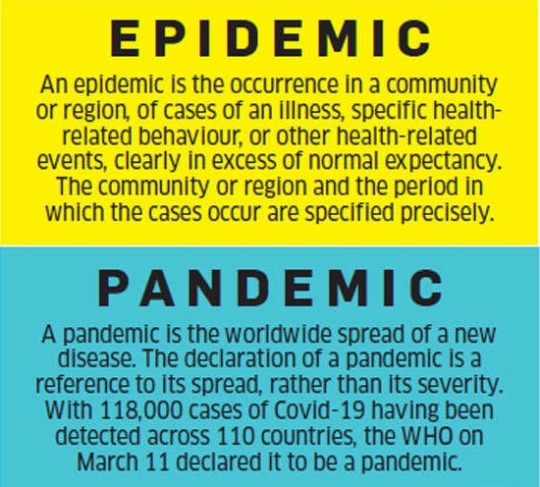#cancermedicineproviderinindia
Text
What are the steps cancer patient should take during corona virus ?

3MEDS
The COVID-19 pandemic has swept through the world impacting every aspect of life creating fear and anxiety while leaving a toll of health and economic devastation which will continue into the foreseeable future. As the virus cycles through society we are facing a new “normal” while we await the scientific biomedical community to develop effective anti-viral drugs, vaccines, and medications to treat the “cytokine storm” which is responsible for the bulk of the mortality associated with the infection.
Cancer patients, their families, and caregivers are disproportionally impacted by the COVID pandemic. Cancer patients are twice as likely to become infected than the general population and significantly more likely to die from COVID-19 once infected.
Individuals impacted by a cancer diagnosis should consider two different strategies to reduce their risk during the pandemic. The first is to ensure they take appropriate precautions to avoid unnecessary exposure to the virus. The second is to consider whether changes to their treatment strategy could be implemented to reduce their risk of infection.
What are the symptoms of coronavirus infection in cancer patients?
The symptoms of COVID-19 are the same in cancer patients as the general population. Patients being treated with steroids can suppress the development of fever.
Common symptoms include:
Fever
Coughing - typically dry non-productive cough
Fatigue
Myalgia (muscle aches)
Head Ache
Shortness of breath
Symptoms typically appear within 2-14 days after exposure, although new data suggests that some people infected with the disease are contagious even before they develop symptoms.
Take Preventive Measures
For now patients should undergo the same preventive measures they would for other common illnesses like the common cold and influenza “the flu” Most important is to wash your hands frequently, make sure you cover your cough and your sneezes, stay away from other individuals with respiratory symptoms, and avoid travel to places where there are documented cases of COVID. Avoid crowds and situations where you’re likely to be less than six feet from others. (Airborne spread of the virus occurs when an infected individual coughs or sneezes, releasing droplets that can travel three feet. Maintaining a six-foot distance provides a safety margin.)
Avoid cafeteria-style eating and public transportation - wash hands after using any public facility.
Is There a Vaccine?
Not yet but researchers are working to develop one. Cancer patients do however need to get a “Flu shot” In India we are still in the midst of flu season and patients with cancer are at higher risk, especially if they are receiving immunotherapy, steroids and immunosuppressive which reduce immunity. Many individuals with blood cancers have diminished immunity even if they are not currently on therapy.
Can Testing Determine If You Have Coronavirus?
The main symptoms of COVID-19 are similar to the common cold and include fever, cough, shortness of breath, and a runny nose. It’s difficult to differentiate COVID-19 from the common cold or flu and currently the only way to tell if someone has coronavirus is through testing with a test available through the Centers for Disease Control and now commercial laboratories. As of April 30 more than 12 million people had been tested for the virus in the and around the world.
Are all patients with cancer at equal risk for infection?
Patients with a weakened immune system may be at greater risk of infection because their defenses against infection are lowered. Blood-related cancers such as leukemia, lymphoma, or multiple myeloma, those undergoing chemotherapy treatment, individuals with more advanced disease, and those with cancer involving the lungs are most vunerable. Patients over the age of 70 are more likely to develop severe cases of COVID-19, as are those who also have cardiovascular disease, diabetes, or high blood pressure, or are active tobacco smokers.
What are Clinics and Cancer Centers Doing?
In order to protect cancer patient’s cancer centers and clinics are already adopting measures designed to improve patient safety by decreasing the risk of exposure to the virus. They are:
Delaying or deferring non-essential clinic visits.
Using phone consultation or telemedicine appointments when possible also use the best medicine delivery app in india to get cancer medicines delivered to our homes hassle free.
If clinic or hospital visits are necessary.
Wear a mask or facial covering.
Practice physical distancing.
Clinics are screening for exposures either at clinic entrance or by phone one day prior to visit by checking for fever, cough, and other symptoms.
Minimizing visitors (1 visitor + patient).
Increasing the interval between visits when possible.
Take Everyday Precautions
The best way to keep others from getting sick is to ensure that you yourself are not exposed to the virus. To do so, please keep the following tips in mind:
Wash your hands thoroughly and often. This needs to be done for at least 20 seconds using soap and water. If you do not have access to soap and water, be sure to use hand sanitizer that contains 60% alcohol.
Avoid touching your face, nose, and eyes, especially if you have come in contact with "high-touch" surfaces in public areas, such as elevator buttons, door handles, and handrails.
Work to avoid crowds, and practice social distancing (a minimum of six feet).
Cancel all non-essential travel. This includes vacations as well as everyday trips to the store.
When will things return to normal?
Public health experts have worked with the local and federal governments to help answer this question. In many parts of the United States, shelter-in-place or stay-at-home restrictions have been lifted or may be lifted in the coming days or weeks. However, we know that the coronavirus continues to circulate in the community and in some communities more than others. As nonessential businesses reopen and as more people begin to leave their homes regularly, it is possible that we will see another surge in COVID-19 cases and deaths.
If your local community, county, or state has allowed nonessential businesses to reopen, the best way to stay safe is to continue to stay at home and avoid being in public as much as possible. Wear cloth face masks or face coverings when you must leave your home. Continue to wash your hands thoroughly and frequently and stay at least 6 feet away from other people if you need to go to the grocery store or pharmacy or other areas where other people may be.
Conclusion
In spite of all the efforts that are made, finding the ideal approach for cancer patients in the middle of the threat of the COVID-19 is not evident. As we are writing this paper the number of cancer patients tested positive is increasing, the capacity of some cancer centers is overwhelmed, and new guidelines are being issued by local and national authorities. The approach of cancer patients must be dynamic and tailored to every patient’s condition, every hospital’s resources and every physician’s experience. Oncologists must keep in mind that beyond any scientific speculations, if the COVID-19 outbreak extends, the risk of unavailability of high-level care in oncology would be greater than that of a SARS-CoV-2 infection in a cancer patient.
-Vikrant Bhagat
#3MEDS#covid-19#immunosuppresant#immunotherapy#myeloma#Best healthcare service provider in India#cancermedicineproviderinindia#24hrsmedicinedeliveryindelhi#cytokinestorm
0 notes
Text
What is an Outbreak, Epidemic And Pandemic in Covid-19

3MEDS
COVID-19 is a disease caused by the novel coronavirus, which was initially called 2019-nCoV, by the experts of the International Committee on Taxonomy of Viruses. World Health Organization already had declared COVID-19 as an international emergency as the disease is spreading at alarming levels. COVID-19 has affected more than 1,016,372 people around the world and killed more than 53,238 people. And even where the virus hasn't yet spread, hospitals and clinics around the world have been preparing for a rush forward of coronavirus patients as a priority over everyday illnesses they treat.
What Is Corona/Covid-19 Virus And Its Origin?

As the symptoms of COVID-19 closely resemble that of a common cold, fever or flu, the populace in China was now not on excessive alert when the disease first of all emerged in local people. This result in Chinese citizens in addition to international travelers traveling often from China to different countries and continents, all through the vacation season, in December 2019 and January 2020, senseless of the reality that their bodies probably carried a deathly viral vector.
COVID-19 now not most effective causes prolonged episodes of cough, cold, excessive fever and respiratory difficulties, that do not subside with conventional medications but is likewise a rather infectious disease, implying it could spread from a sick man or woman to a healthful individual, by way of merely coming in near contact. The mechanism of transmission of the n-COV virus entails air droplets emanated from an sick patient to a normal human.
Basic Definitions Of Epidemic,Pandemic and Outbreak
AN EPIDEMIC is a disease that affects a large number of people within a community, population, or region.
A PANDEMIC is an epidemic that’s spread over multiple countries or continents.
ENDEMIC is something that belongs to a particular people or country.
AN OUTBREAK is a greater-than-anticipated increase in the number of endemic cases. It can also be a single case in a new area. If it’s not quickly controlled, an outbreak can become an epidemic.

According to the World Health Organisation, when a new disease spread in the whole world it becomes pandemic. That is when an epidemic spread into two or more continents with the sustained person to person transmission. However, on 11 March 2020, the World Health Organisation declared the COVID-19 outbreak from epidemic to pandemic.

SCHEMATIC DIAGRAM OF THE CORONAVIRUS STRUCTURE
Precautions to stay safe and steer clear of acquiring COVID-19.
Consciously engage in social distancing. Work from home as much as possible and even while venturing out to buy essentials like groceries and medicine, maintain a distance of at least 2 meters from anyone else.
Avoid unnecessary travel. With India too recording more than 60 cases, be cautious while traveling.
If you are suffering from persistent dry cough, fever, difficulty in breathing, consult a doctor immediately.
If you have traveled abroad to any of the corona virus affected countries in recent months, get screened for COVID-19.
Do not panic and start believing in rumors. Practice personal hygiene - use hand sanitizers, wash hands regularly and avoid participating in large gatherings.
Since there is no vaccine available for COVID-19, practice all precautionary measures.
Conclusion
This novel corona virus,has led to a public health emergency of international concern so the COVID-19 outbreak, which has now declared as ‘Pandemic’ has confronted the economic, medical, and public health infrastructure of many countries, including China,India , USA , Italy, France, and many more all over the world.
In India, even after applying proper and timely containment and mitigation measures, COVID-19 newer cases are being detected on daily basis . India is continuing to face this situation in a well-planned approach so far. The Indian government quarantined India from the rest of the world, but the forthcoming few weeks are extremely critical.So be safe,stay heathy and have a good day and follow government regulatories as means to stay safe.
-Vikrant Bhagat
#www.3meds.com#coronavirus#outbreak#pandemic#epedemic#buymedicineonlineinbanglore#ICTV#WHO#india china#france#italy#22bestmedicineappinindia#cancermedicineproviderinindia
0 notes